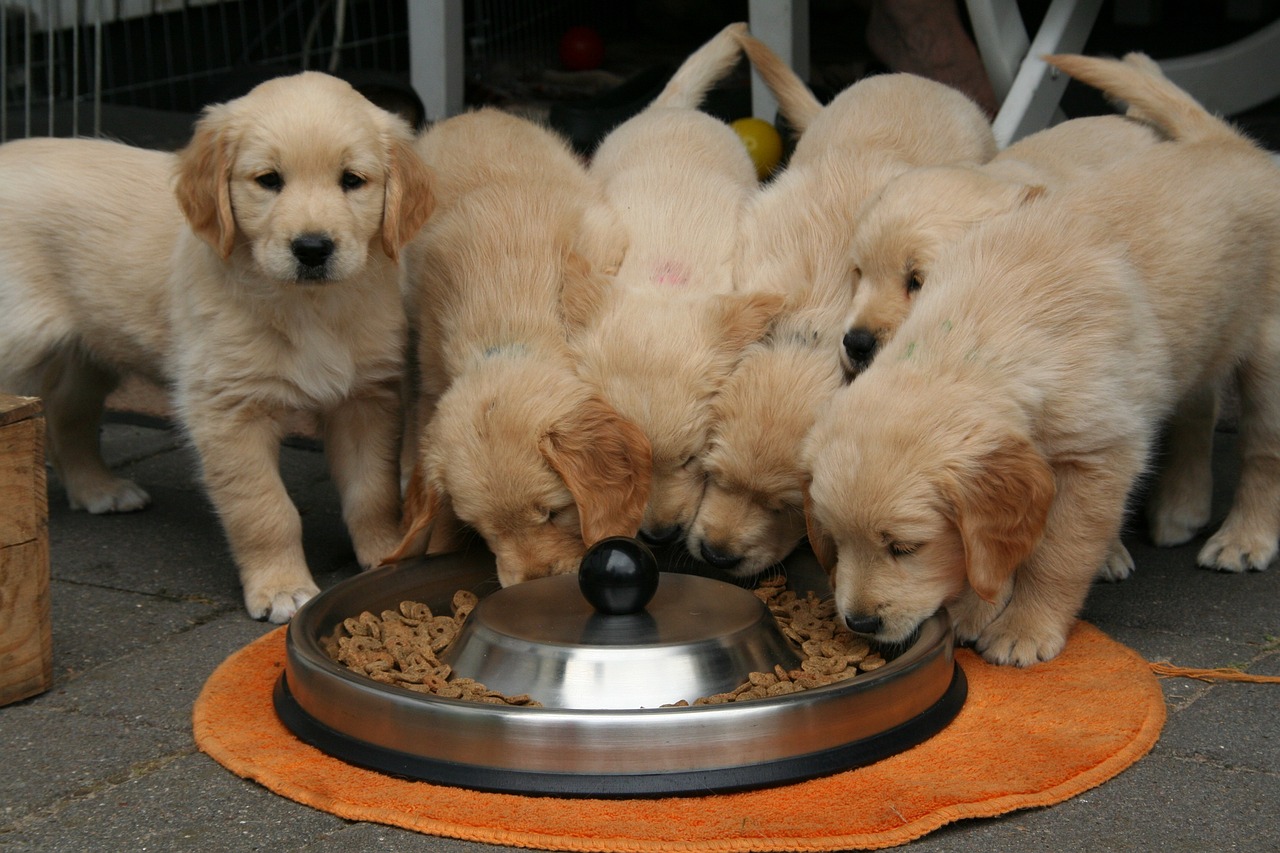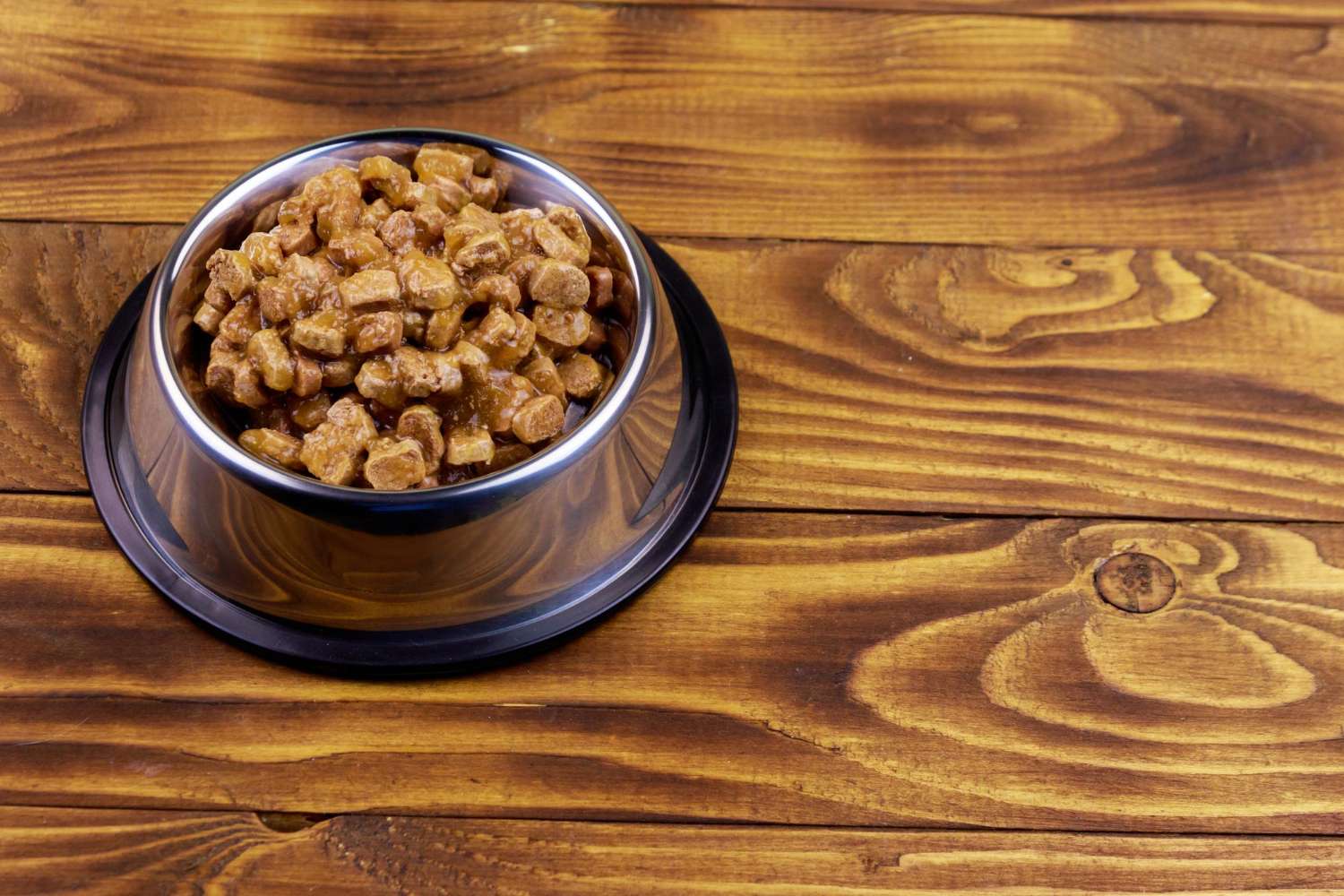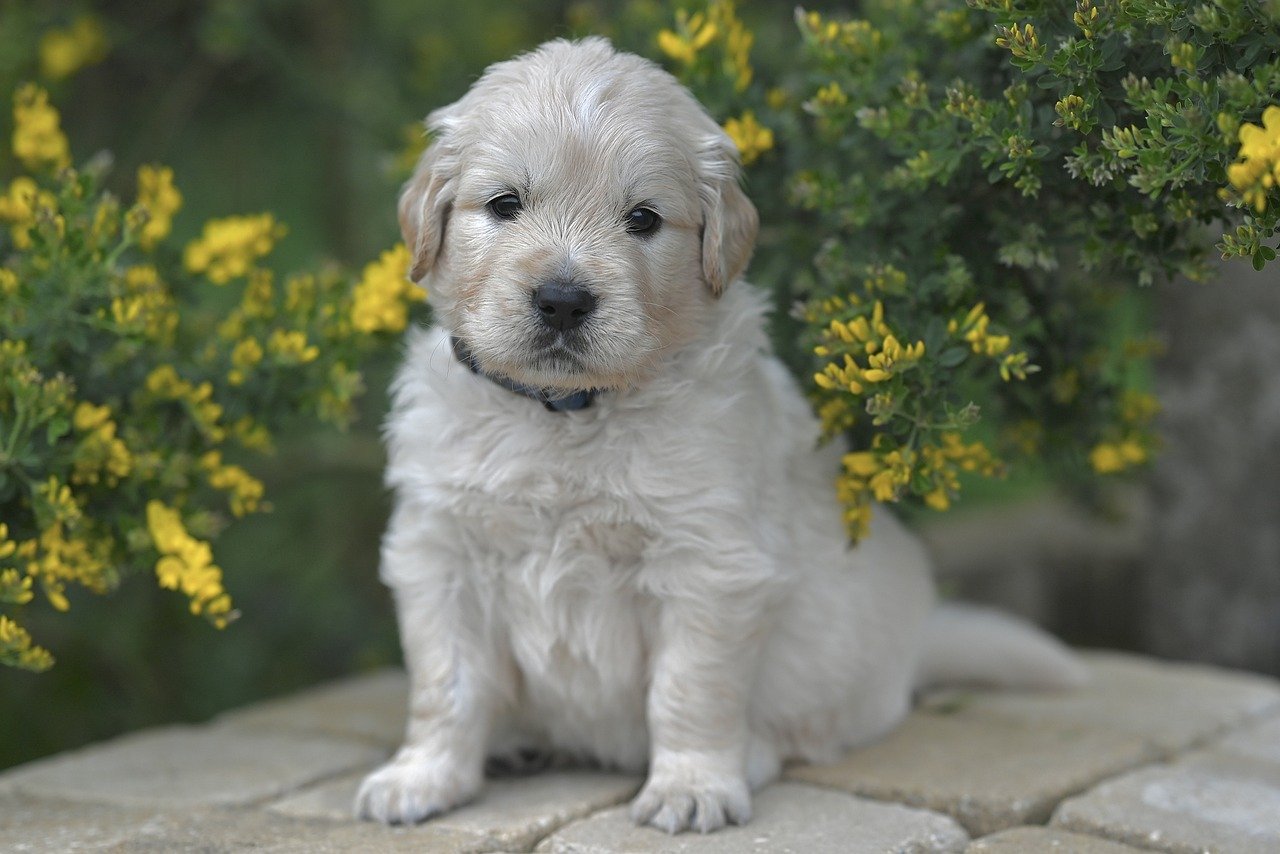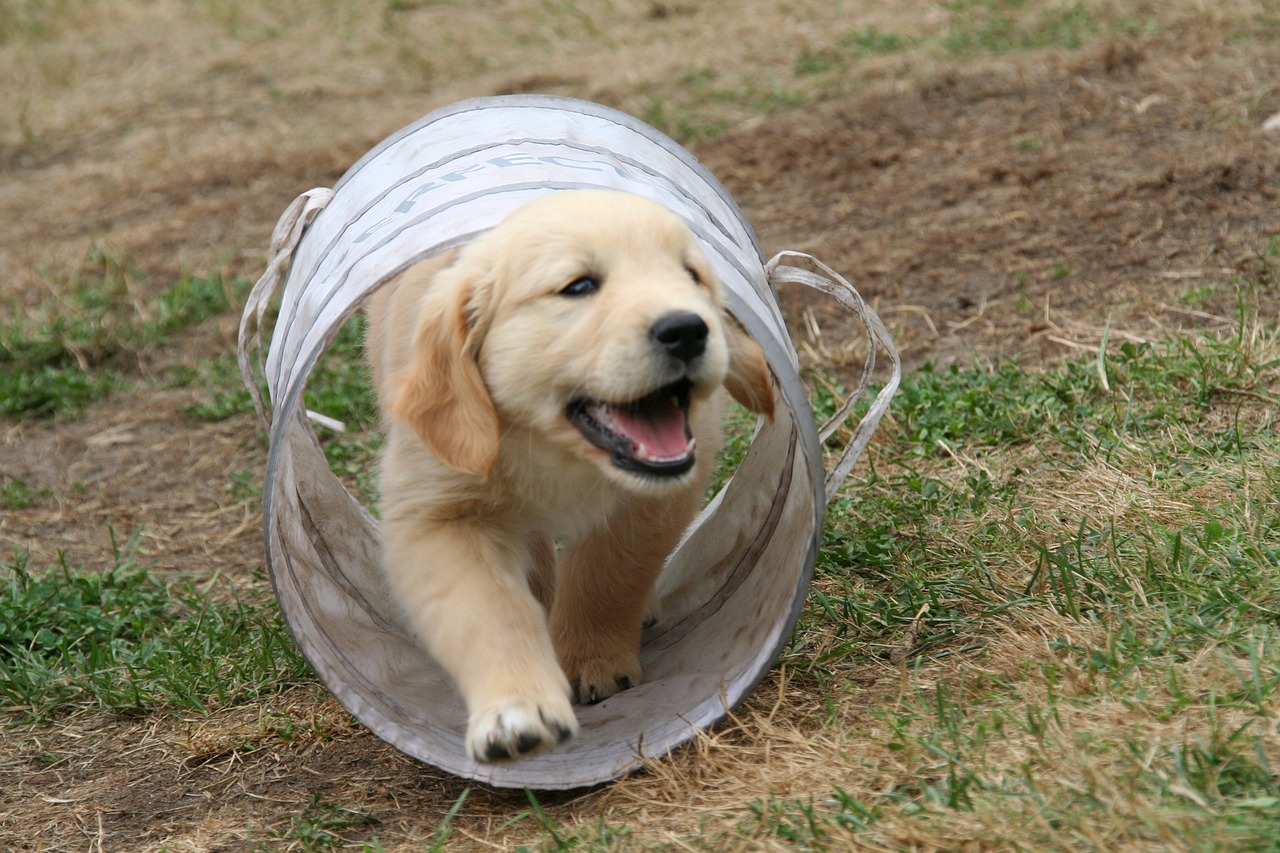Recently welcomed home a Goldie baby? Well then, a great question you might have is “How much food for Golden Retriever puppy per day is enough?” It never seems enough for them, after all.
These little buddies only have one chance to grow up, so you can feel the urge to feed them whenever they beg and shower them with as much nutrition as possible. We were in your shoes! However, the right approach is to provide your pup with just the right amount to support their development so they can grow into healthy and happy dogs. This comprehensive guide here will help get you going, so read until the end and don’t miss a single word!
Understanding the Nutritional Needs of Golden Retriever Puppies

“A well-balanced diet is crucial for the proper growth and development of your puppy” – you probably have read this sentence many times as you try to find the best food for your Goldie. But what exactly is a well-balanced diet? Well, this is not a simple question!
In general, the ideal food for Golden Retriever puppies should provide the right amount of calories to promote healthy growth without overfeeding. We have talked with pet nutritionists and gathered some estimates based on age and weight:
| Age (Months) | Weight (lbs) | Calories per Day |
| 2-3 | 10-15 | 400-600 |
| 3-4 | 15-25 | 600-900 |
| 4-6 | 25-45 | 900-1400 |
| 6-9 | 45-65 | 1400-1700 |
| 9-12 | 65-75 | 1700-2100 |
Another key factor is the amount of protein, fat, carbohydrates, vitamins, and minerals. This balance ensures that your puppy gets all the necessary nutrients for bone growth, muscle development, and overall well-being.
Here’s a quick rundown of the most important nutrients to support their growth and overall health:
| Nutrient | Role in Puppy Development |
| Protein | Crucial for building and repairing muscles |
| Fats | Supply energy and aid in brain development |
| Carbohydrates | Act as an energy source for energetic puppies |
| Vitamins & minerals | Essential for immune health and overall wellness |
| Calcium | Vital for proper bone growth |
| Omega-3 fatty acids | Contribute to brain development and support healthy skin and coat |
How Much Food for Golden Retriever Puppy: Feeding Guidelines by Stage
Now that we have covered the nutritional needs of Golden Retriever puppies, let’s dive into more specific feeding guidelines. As we discussed earlier, the amount of food your puppy needs will change as they grow. This is because their energy requirements and metabolic rates shift throughout their developmental stages.
The following chart builds on the calorie information we provided earlier, offering a practical guide for how much food to give your pup at different ages. Take a quick look before we dive deep into the details:
| Age | Gender | Amount of Food (cups/day) | Number of Meals per Day |
| 2 months | Male & female | 1½ | 3 |
| 3 months | Male & female | 2 | 3 |
| 4 months | Male & female | 2½ | 3 |
| 5-6 months | Male & female | 3 | 3 |
| 6-7 months | Male | 3½ to 4 | 2 |
| 6-7 months | Female | 3 | 2 |
Feeding Guidelines from 8 Weeks to 3 Months
During the initial months, your Golden Retriever puppy will grow quickly. Set up a consistent feeding routine and provide appropriate portion sizes. Feed your puppy high-quality food designed for Golden Retrievers, using the manufacturer’s feeding chart as a reference.
Generally, their daily meals should be split into three servings, evenly distributed throughout the day. Monitor your puppy’s weight and body condition, adjusting portion sizes according to their growth and activity levels.
Transitioning from 3 to 6 Months

From 3 to 6 months old, your Golden Retriever puppy will begin the shift from puppy food to adult food. This change should be made gradually over several weeks to prevent any digestive problems.
Begin by mixing a small portion of adult food with their puppy food, and then slowly increase the adult food while decreasing the puppy food. Follow the feeding guidelines provided on the adult food packaging, and monitor your puppy’s weight and health throughout this transition.
Adjusting Food Amounts as Your Puppy Near Adulthood
As your fur baby approaches adulthood, their growth rate decreases and their dietary requirements evolve. Between 6 and 12 months, you can gradually transition them to an adult formula suitable for medium to large breeds.
Check the feeding instructions on the adult food packaging and adjust portion sizes based on your dog’s weight, body condition, and activity level. Monitor their weight regularly to avoid overfeeding or underfeeding.
Suitable Food Types for Golden Retriever Puppies
Dry Food
Dry kibble is often the most convenient and preferred option for Golden Retriever puppies. Premium dry food designed specifically for large-breed puppies provides a well-balanced combination of proteins, fats, and carbohydrates that support their rapid growth.
Choose brands that prioritize a high-quality protein source as the primary ingredient and avoid those with too many fillers or artificial preservatives. Dry food also helps promote dental health by reducing plaque accumulation as puppies chew.
Wet Food

Incorporating wet food into your Golden Retriever puppy’s diet can be beneficial, especially for picky eaters. It typically contains more moisture, which aids in hydration and may reduce the risk of urinary tract issues.
Wet food is often more appealing due to its strong smell and texture, making it easier to encourage puppies to eat. However, it tends to be more expensive than dry food and has a shorter shelf life once opened. Many pet owners choose to mix wet and dry food to offer variety and ensure balanced nutrition.
Homemade Food
Some owners opt to prepare homemade meals for their Golden Retrievers. This method provides full control over the ingredients and quality, but it requires careful planning to ensure all nutritional needs are met.
If you decide to take this approach, consult a veterinary nutritionist to formulate a balanced recipe with the right amounts of proteins, carbohydrates, fats, vitamins, and minerals. Remember that preparing homemade diets can be time-consuming and may require additional supplements to meet all nutritional requirements.
How Often Should You Feed Your Golden Retriever Puppy?
Creating a regular feeding schedule is essential for your Golden Retriever puppy’s digestion and overall well-being.
Meal Frequency for Puppies Younger Than Six Months
For Golden Retriever puppies younger than six months, it is generally recommended to feed them three to four times daily. This regular feeding routine aids in their swift growth and development. Distributing their meals throughout the day helps avoid excessive hunger and prevents them from overeating at any one time.
Transitioning to Fewer Meals After Six Months
When your Golden Retriever puppy turns six months old, you can begin transitioning them to a twice-daily feeding schedule. By this age, their growth rate decreases, and their digestive system is more capable of managing larger meals.
The Importance of Consistency and Timing in Feeding

Consistency and timing are crucial elements in your Golden Retriever puppy’s feeding schedule. Setting specific meal times and adhering to them aids in regulating their metabolism and maintaining stable hunger levels. Furthermore, providing meals at the same time daily can support house training by establishing a predictable bathroom routine.
Signs of Appropriate Food Quantity
It’s essential to ensure that your Golden Retriever puppy is receiving the appropriate amount of food for their health and growth. Here are some important signs to look out for:
Ideal Weight and Body Shape
A properly nourished Golden Retriever puppy should display a noticeable waist when seen from above and have a slight inward curve of the belly when viewed from the side. You should be able to gently feel their ribs, but they shouldn’t be easily seen.
Regular weigh-ins and body condition assessments can help you monitor your puppy’s development and ensure they are maintaining a healthy weight for their age.
Energy Levels and Activity

Well-nourished Golden Retriever puppies should maintain steady energy levels throughout the day. They should be lively and interactive during playtime while also being capable of relaxing when it’s time to rest.
If your puppy appears sluggish or overly energetic, it may suggest a dietary imbalance or incorrect portion sizes. Monitor their activity levels and adjust their food intake as needed.
Stool Condition
The condition of your puppy’s stool can offer important clues about their digestive health and the suitability of their diet. Ideally, stools should be firm and well-formed, avoiding extremes of hardness or softness.
Frequent loose stools might suggest overfeeding or a food intolerance, while very hard stools could indicate dehydration or a lack of fiber in their diet. If you observe ongoing changes in stool consistency, consult your veterinarian to rule out any potential health concerns.
Conclusion
Providing proper nutrition during your Golden Retriever’s puppy phase is crucial for establishing a foundation for a healthy and happy adult dog. By learning how much food for a Golden Retriever puppy is appropriate and adhering to the guidelines in this article, along with regular check-ins with your veterinarian, you can ensure your puppy receives the balanced diet they require. This will promote optimal growth, robust bones and muscles, a strong immune system, and overall well-being.
Keep in mind that investing in the right nutrition now, including understanding how much food your Golden Retriever puppy needs, can result in long-term health benefits for your cherished pet.

As a professional writer who specializes in canine care, I have spent a significant amount of time researching and writing about Golden Retrievers. While I do not own a Golden Retriever, my considerable research and collaboration with doctors, breeders, and Golden Retriever experts has provided me with a lot of information about this incredible breed. My writing covers a wide range of topics, from food and health concerns to behavior and training, to assist owners in raising well-rounded, healthy golden retrievers. Through this website, I wish to share my knowledge and positively touch the lives of both dogs and their humans.

